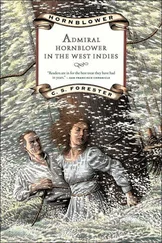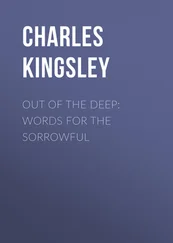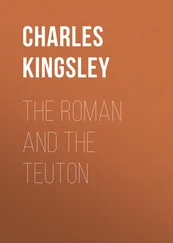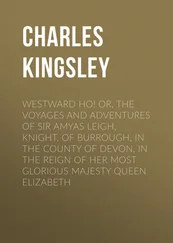Charles Kingsley - At Last - A Christmas in the West Indies
Здесь есть возможность читать онлайн «Charles Kingsley - At Last - A Christmas in the West Indies» — ознакомительный отрывок электронной книги совершенно бесплатно, а после прочтения отрывка купить полную версию. В некоторых случаях можно слушать аудио, скачать через торрент в формате fb2 и присутствует краткое содержание. Жанр: Путешествия и география, История, foreign_edu, foreign_antique, foreign_prose, на английском языке. Описание произведения, (предисловие) а так же отзывы посетителей доступны на портале библиотеки ЛибКат.
- Название:At Last: A Christmas in the West Indies
- Автор:
- Жанр:
- Год:неизвестен
- ISBN:нет данных
- Рейтинг книги:5 / 5. Голосов: 1
-
Избранное:Добавить в избранное
- Отзывы:
-
Ваша оценка:
- 100
- 1
- 2
- 3
- 4
- 5
At Last: A Christmas in the West Indies: краткое содержание, описание и аннотация
Предлагаем к чтению аннотацию, описание, краткое содержание или предисловие (зависит от того, что написал сам автор книги «At Last: A Christmas in the West Indies»). Если вы не нашли необходимую информацию о книге — напишите в комментариях, мы постараемся отыскать её.
At Last: A Christmas in the West Indies — читать онлайн ознакомительный отрывок
Ниже представлен текст книги, разбитый по страницам. Система сохранения места последней прочитанной страницы, позволяет с удобством читать онлайн бесплатно книгу «At Last: A Christmas in the West Indies», без необходимости каждый раз заново искать на чём Вы остановились. Поставьте закладку, и сможете в любой момент перейти на страницу, на которой закончили чтение.
Интервал:
Закладка:
We went up 800 feet of steep hill, to pay a visit on that Morne Fortunée which Moore and Abercrombie took, with terrible loss of life, in May 1796; and wondered at the courage and the tenacity of purpose which could have contrived to invest, and much more to assault, such a stronghold, ‘dragging the guns across ravines and up the acclivities of the mountains and rocks,’ and then attacking the works only along one narrow neck of down, which must be fat, to this day, with English blood.
All was peaceful enough now. The forts were crumbling, the barracks empty, and the ‘neat cottages, smiling flower gardens, smooth grass-plats and gravel-walks,’ which were once the pride of the citadel, replaced for the most part with Guava-scrub and sensitive plants. But nothing can destroy the beauty of the panorama. To the north and east a wilderness of mountain peaks; to the west the Grand Cul-de-sac and the Carenage, mapped out in sheets of blue between high promontories; and, beyond all, the open sea. What a land: and in what a climate: and all lying well-nigh as it has been since the making of the world, waiting for man to come and take possession. But there, as elsewhere, matters are mending steadily; and in another hundred years St. Lucia may be an honour to the English race.
We were, of course, anxious to obtain at St. Lucia specimens of that abominable reptile, the Fer-de-lance, or rat-tailed snake, 17 17 Craspedocephalus lanceolatus.
which is the pest of this island, as well as of the neighbouring island of Martinique, and, in Père Labat’s time, of lesser Martinique in the Grenadines, from which, according to Davy, it seems to have disappeared. It occurs also in Guadaloupe. In great Martinique—so the French say—it is dangerous to travel through certain woodlands on account of the Fer-de-lance, who lies along a bough, and strikes, without provocation, at horse or man. I suspect this statement, however, to be an exaggeration. I was assured that this was not the case in St. Lucia; that the snake attacks no oftener than other venomous snakes,—that is, when trodden on, or when his retreat is cut off. At all events, it seems easy enough to kill him: so easy, that I hope yet it may be possible to catch him alive, and that the Zoological Gardens may at last possess—what they have long coveted in vain—hideous attraction of a live Fer-de-lance. The specimens which we brought home are curious enough, even from this æsthetic point of view. Why are these poisonous snakes so repulsive in appearance, some of them at least, and that not in proportion to their dangerous properties? For no one who puts the mere dread out of his mind will call the Cobras ugly, even anything but beautiful; nor, again, the deadly Coral snake of Trinidad, whose beauty tempts children, and even grown people, to play with it, or make a necklace of it, sometimes to their own destruction. But who will call the Puff Adder of the Cape, or this very Fer-de-lance, anything but ugly and horrible: not only from the brutality signified, to us at least, by the flat triangular head and the heavy jaw, but by the look of malevolence and craft signified, to us at least, by the eye and the lip? ‘To us at least,’ I say. For it is an open question, and will be one, as long as the nominalist and the realist schools of thought keep up their controversy—which they will do to the world’s end—whether this seeming hideousness be a real fact: whether we do not attribute to the snake the same passions which we should expect to find—and to abhor—in a human countenance of somewhat the same shape, and then justify our assumption to ourselves by the creature’s bites, which are actually no more the result of craft and malevolence than the bite of a frightened mouse or squirrel. I should be glad to believe that the latter theory were the true one; that nothing is created really ugly, that the Fer-de-lance looks an hideous fiend, the Ocelot a beautiful fiend, merely because the outlines of the Ocelot approach more nearly to those which we consider beautiful in a human being: but I confess myself not yet convinced. ‘There is a great deal of human nature in man,’ said the wise Yankee; and one’s human nature, perhaps one’s common-sense also, will persist in considering beauty and ugliness as absolute realities, in spite of one’s efforts to be fair to the weighty arguments on the other side.
These Fer-de-lances, be that as it may, are a great pest in St. Lucia. Dr. Davy says that he ‘was told by the Lieutenant-Governor that as many as thirty rat-tailed snakes were killed in clearing a piece of land, of no great extent, near Government House.’ I can well believe this, for about the same number were killed only two years ago in clearing, probably, the same piece of ground, which is infested with that creeping pest of the West Indies, the wild Guava-bush, from which guava-jelly is made. The present Lieutenant-Governor has offered a small reward for the head of every Fer-de-lance killed: and the number brought in, in the first month, was so large that I do not like to quote it merely from memory. Certainly, it was high time to make a crusade against these unwelcome denizens. Dr. Davy, judging from a Government report, says that nineteen persons were killed by them in one small parish in the year 1849; and the death, though by no means certain, is, when it befalls, a hideous death enough. If any one wishes to know what it is like, let him read the tragedy which Sir Richard Schomburgk tells—with his usual brilliance and pathos, for he is a poet as well as a man of science—in his Travels in British Guiana , vol. ii. p. 255—how the Craspedocephalus , coiled on a stone in the ford, let fourteen people walk over him without stirring, or allowing himself to be seen: and at last rose, and, missing Schomburgk himself, struck the beautiful Indian bride, the ‘Liebling der ganzen Gesellschaft;’ and how she died in her bridegroom’s arms, with horrors which I do not record.
Strangely enough, this snake, so fatal to man, has no power against another West Indian snake, almost equally common, namely, the Cribo. 18 18 Coluber variabilis.
This brave animal, closely connected with our common water-snake, is perfectly harmless, and a welcome guest in West Indian houses, because he clears them of rats. He is some six or eight feet long, black, with more or less bright yellow about the tail and under the stomach. He not only faces the Fer-de-lance, who is often as big as he, but kills and eats him. It was but last year, I think, that the population of Carenage turned out to see a fight in a tree between a Cribo and a Fer-de-lance, of about equal size, which, after a two hours’ struggle, ended in the Cribo swallowing the Fer-de-lance, head foremost. But when he had got his adversary about one-third down, the Creoles—just as so many Englishmen would have done—seeing that all the sport was over, rewarded the brave Cribo by killing both, and preserving them as a curiosity in spirits. How the Fer-de-lance came into the Antilles is a puzzle. The black American scorpion—whose bite is more dreaded by the Negroes than even the snake’s—may have been easily brought by ship in luggage or in cargo. But the Fer-de-lance, whose nearest home is in Guiana, is not likely to have come on board ship. It is difficult to believe that he travelled northward by land at the epoch—if such a one there ever was—when these islands were joined to South America: for if so, he would surely be found in St. Vincent, in Grenada, and most surely of all in Trinidad. So far from that being the case, he will not live, it is said, in St. Vincent. For (so goes the story) during the Carib war of 1795-96, the savages imported Fer-de-lances from St. Lucia or Martinique, and turned them loose, in hopes of their destroying the white men: but they did not breed, dwindled away, and were soon extinct. It is possible that they, or their eggs, came in floating timber from the Orinoco: but if so, how is it that they have never been stranded on the east coast of Trinidad, whither timber without end drifts from that river? In a word, I have no explanation whatsoever to give; as I am not minded to fall back on the medieval one, that the devil must have brought them thither, to plague the inhabitants for their sins.
Интервал:
Закладка:
Похожие книги на «At Last: A Christmas in the West Indies»
Представляем Вашему вниманию похожие книги на «At Last: A Christmas in the West Indies» списком для выбора. Мы отобрали схожую по названию и смыслу литературу в надежде предоставить читателям больше вариантов отыскать новые, интересные, ещё непрочитанные произведения.
Обсуждение, отзывы о книге «At Last: A Christmas in the West Indies» и просто собственные мнения читателей. Оставьте ваши комментарии, напишите, что Вы думаете о произведении, его смысле или главных героях. Укажите что конкретно понравилось, а что нет, и почему Вы так считаете.












